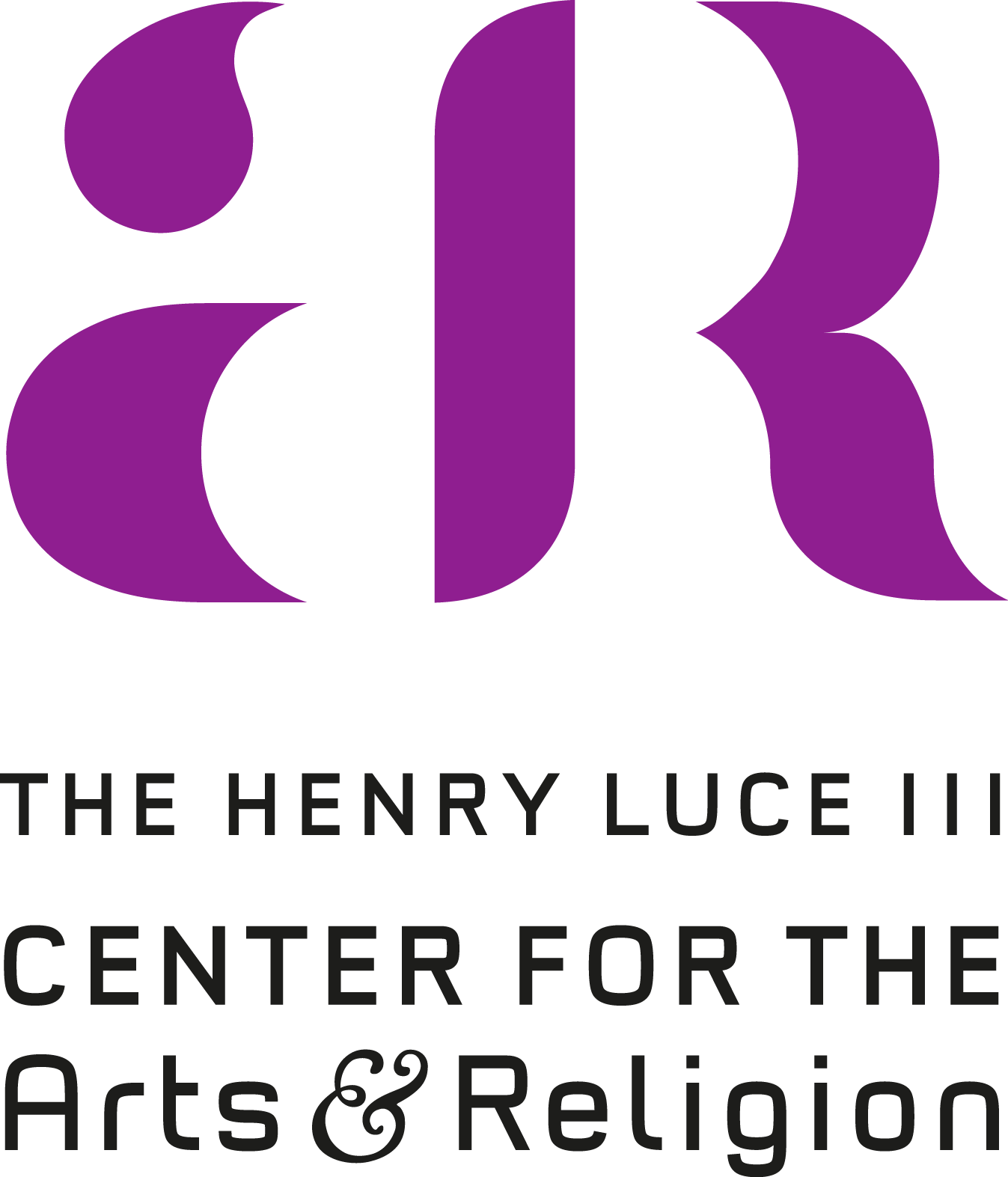Susan Hufton
And Tie my Life within this Band (triptych), 2017
HxWxD open: 6½ x 9½ x ¼”
HxWxD closed: 6½ x 3 x ¾”
Portable altar: oak boards, vellum, sumi ink, quill and brush with watercolour paint and shell gold; hand dyed linen, gold coloured silk
As one of the scribes for The Saint John’s Bible, British calligrapher Susan Hufton is no stranger to using calligraphy for sacred texts. She employs the script designed for that Bible to write a series of ancient and medieval Christian hymns for this portable altar made for personal devotion. The triptych comes with several removable vellum sheets with the skillfully scribed words of ancient and medieval Christian hymns celebrating Hufton’s own Anglo-Saxon and Latin Christian heritage: “The Dream of the Rood,” an Old English poem in which the cross of Christ tells its story; “Caedmon’s Hymn,” a brief praise of God the Creator from seventh-century Northumbria; the Latin hymn “Of the Father’s Love Begotten,” by Aurelius Clemens Prudentius (348–413 CE) rendered into English by John Mason Neale (1818–1866); and a contemporary hymn from the Iona Community, “Before the World Began.” Hufton’s gathering of words and stanzas suggest that not only are these sacred words profound—not only conduits of prayer—but also, that language itself is a miracle, a blessing from God.
For a Christian calligrapher, the parallel between the practice of giving letters form and biblical images of Christ as Word made Flesh (John 1:1–18) and Alpha and Omega (Revelation 1:8) is too obvious to ignore. Hufton has chosen hymns that focus on these alphabetic images of Christ. The Iona hymn begins:
Before the world began one Word was there;
grounded in God he was, rooted in care;
by him all things were made;
in him was love displayed;
through him God spoke and said, 'I am for you.'
The opening verses alludes to the Johannine language of the Word made Flesh at creation, which draws on Old Testament depictions of Wisdom (e.g. Proverbs 8:22–36; Sirach 24). Similarly, the ancient Latin hymn opens:
Of the Father's love begotten
ere the worlds began to be,
he is Alpha and Omega,
he the Source, the Ending he.
Hufton fills three vellum sheets with this hymn, in Latin and English, punctuated by the Greek letters alpha (Α) and omega (Ω). Much like the English idiom “from A to Z,” when paired, the first and last letters of the Greek alphabet suggest that Christ is over all, from creation to eschaton.
The Old English poems suggest another dimension to language: the miraculous. “The Dream of the Rood” (“rood” is an archaic term for “cross”) narrates a man’s dream in which the cross of Christ itself speaks to him. The cross tells the sordid tale of the crucifixion, recalls its own steadfastness in the necessary role in played in Christ’s torment, and exhorts the dreamer to preach its story. This earliest extant copy of this poem is indeed carved into a stone cross, the eighth-century Ruthwell Cross in modern-day Scotland. The other Old English text, “Caedmon’s Hymn,” is found in Bede’s Ecclesiastical History of the English People (c. 731 CE). Bede tells us that this brief hymn came to the illiterate shepherd Caedmon in a dream. It begins:
Praise now to the keeper of the kingdom of heaven,
the power of the Creator, the profound mind
of the glorious Father, who fashioned the beginning
of every wonder, the eternal Lord.
This poem, untranslated in Hufton’s treatment, foregrounds a now-familiar theme: the Word at Creation, the order and blueprint of God the Master Crafter. More importantly, both of these words are themselves miraculous. Both were given in a dream, and in one, an inanimate object speaks.
By situating these prayerful poems in an altar, Hufton invites the reader and user of this altar to arrange the sheets of sacred text as they see fit. We are not merely to receive the word—the Word—but also to refashion it, to engage it, to make it our own. The title of her piece, a quote from George Herbert’s “Life,” implies that in prayer, we tie our lives to these words, just as the words are tied to the altar by its straps. Just as the twenty-six letters of the Roman alphabet create an infinite possibility of words, paragraphs, and books, so Hufton’s vellum sheets suggest manifold possibilities for personalizing and forming connections. Language itself is the miracle.
—Homrighausen
Further Reading:
Interview with Sue Hufton about her work on The Saint John’s Bible
Redesigning the Medieval Book (Bristol: University of the West of England, 2018). This is the exhibit for which Hufton made this piece; see p. 26.
Calderhead, Christopher. Illuminating the Word: The Making of The Saint John’s Bible. 2nd ed. Collegeville, MN: Liturgical Press, 2015.
Hufton, Susan. “Behind the Scenes: The Making of the St John’s Bible.” Alphabet 27, no. 1 (Fall 2001): 19–22.
Hufton, Susan. Step-By-Step Calligraphy: A Complete Guide with Creative Projects. New York: Sterling, 1997.
Copyright notes:
“The Dream of the Rood” and “Caedmon’s Hymn” translations from Michael Alexander, The First Poems in English (London: Penguin Classics, 2008).
“Before the World Began” by John Bell and Graham Maule, in Singing the Faith (London: Canterbury Press, 2011), hymn #104









